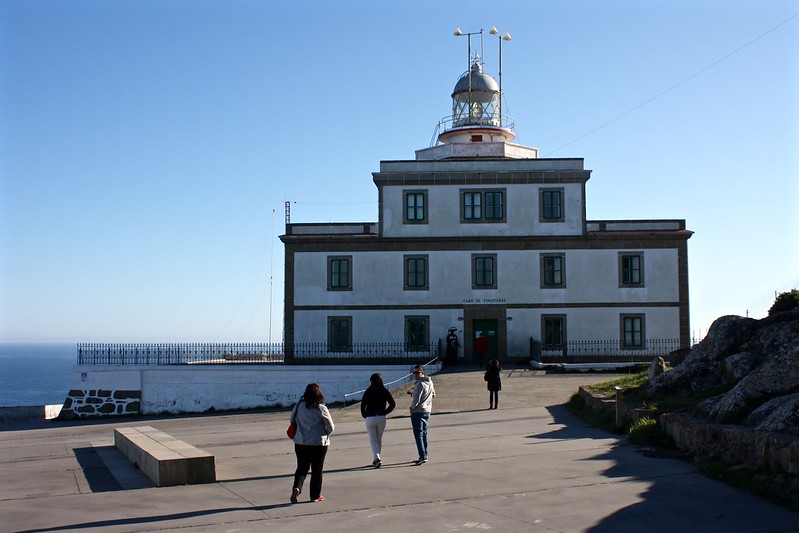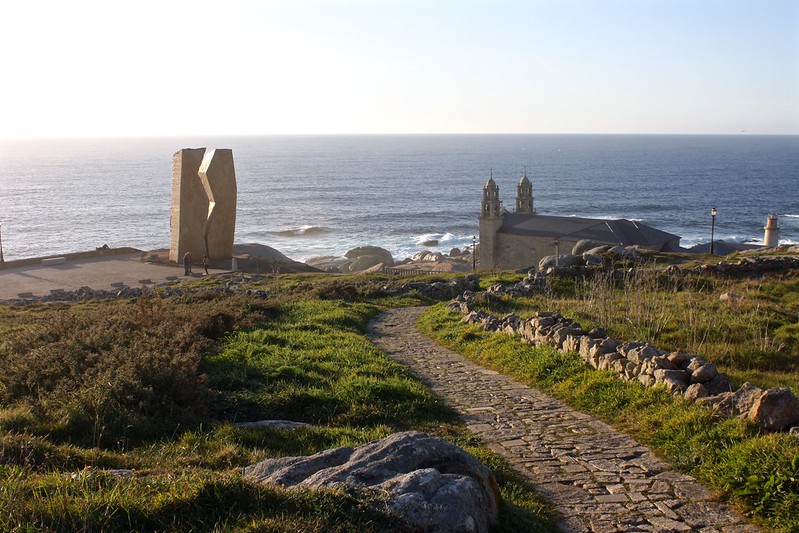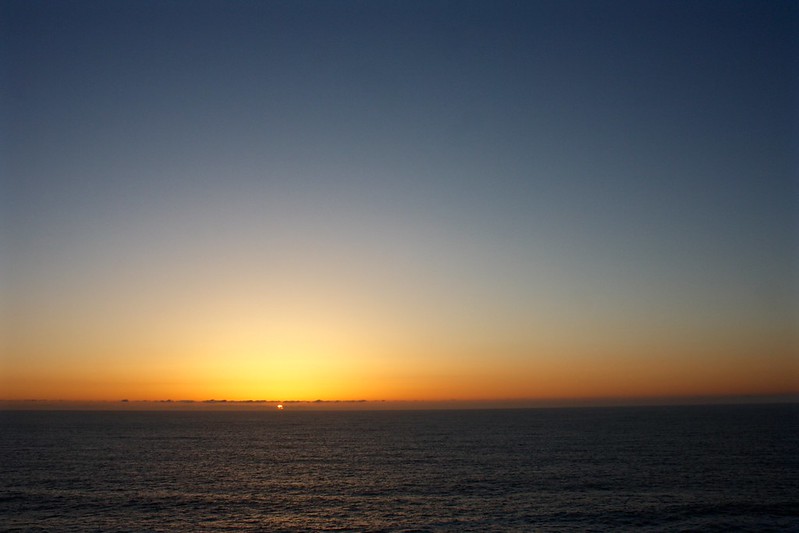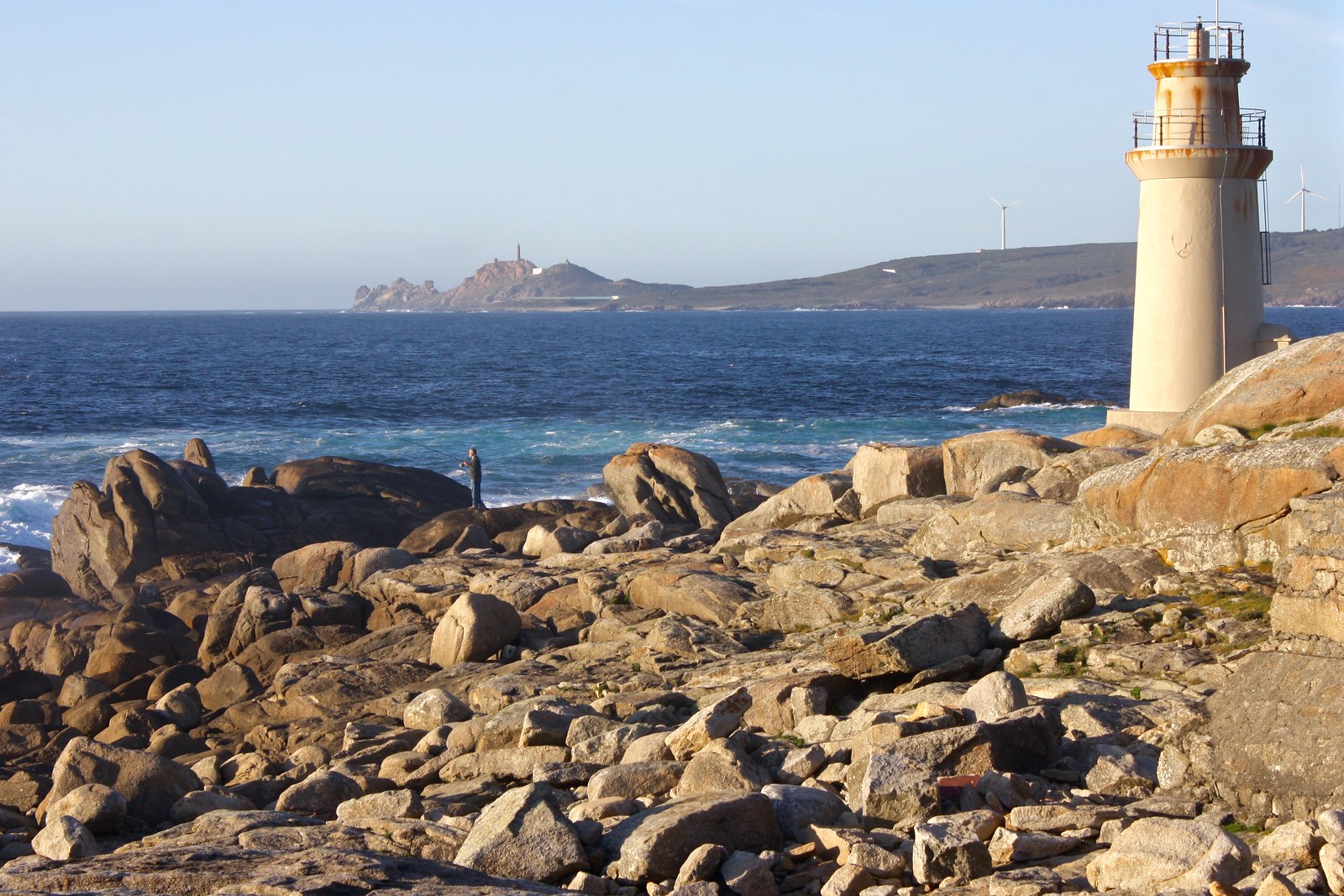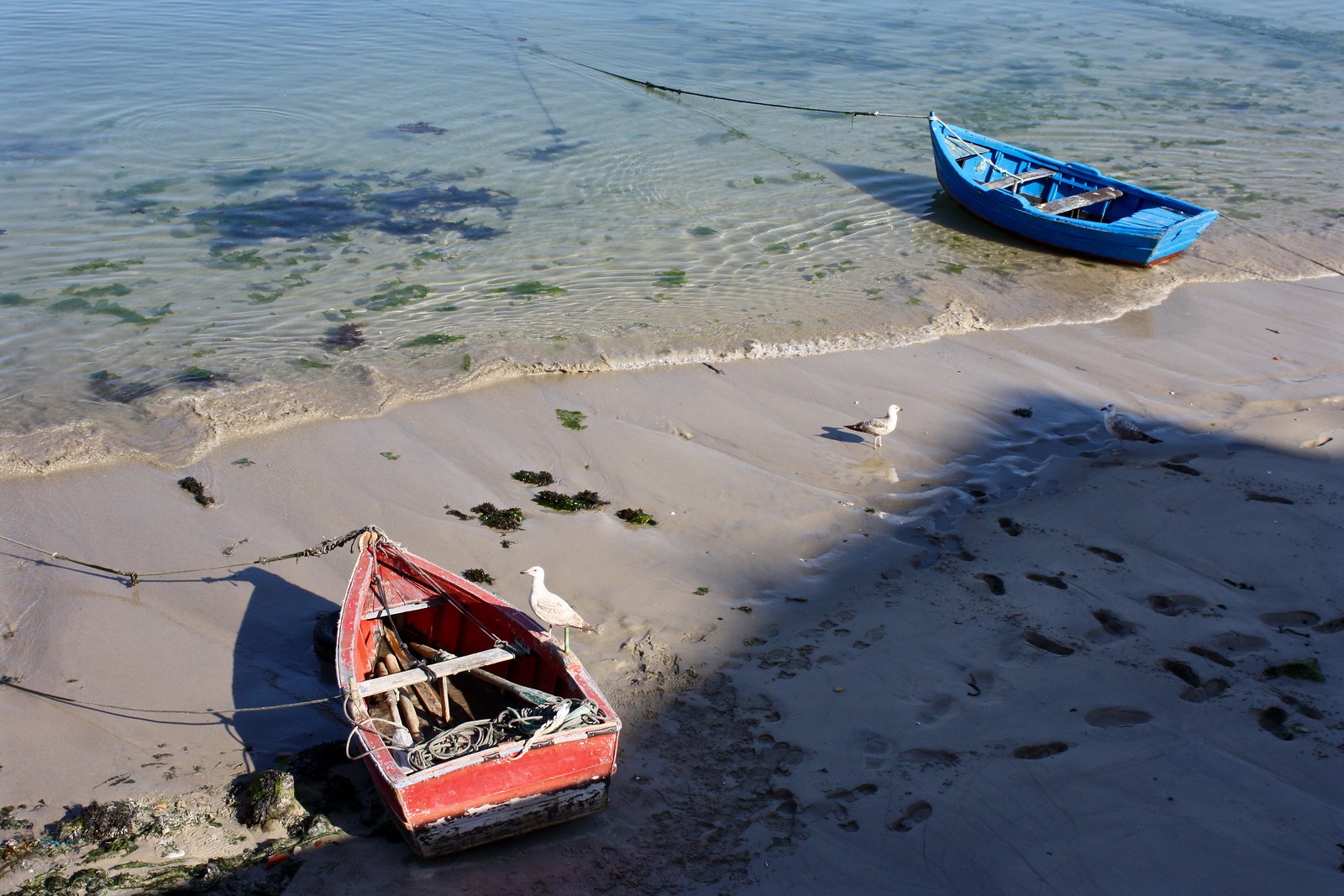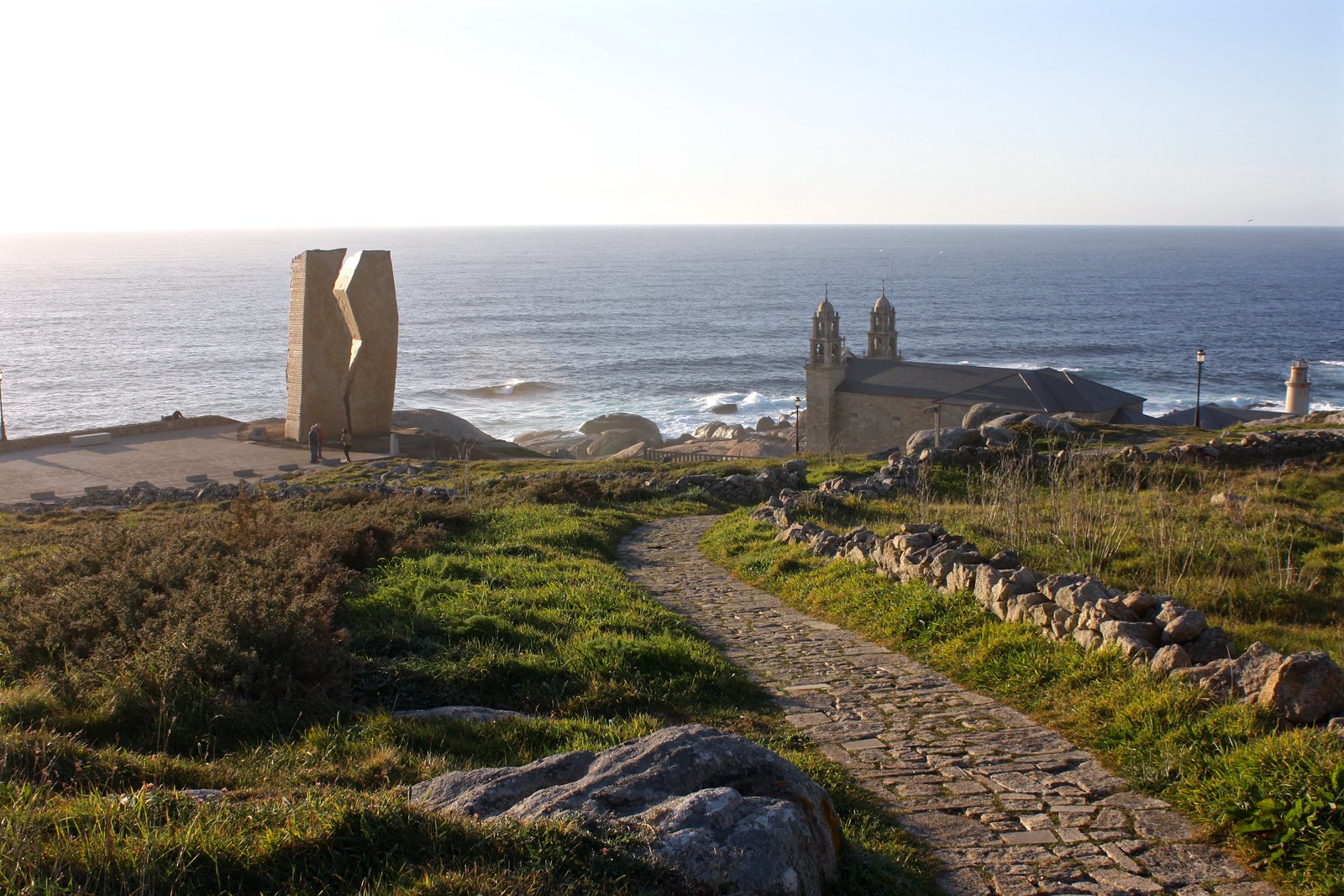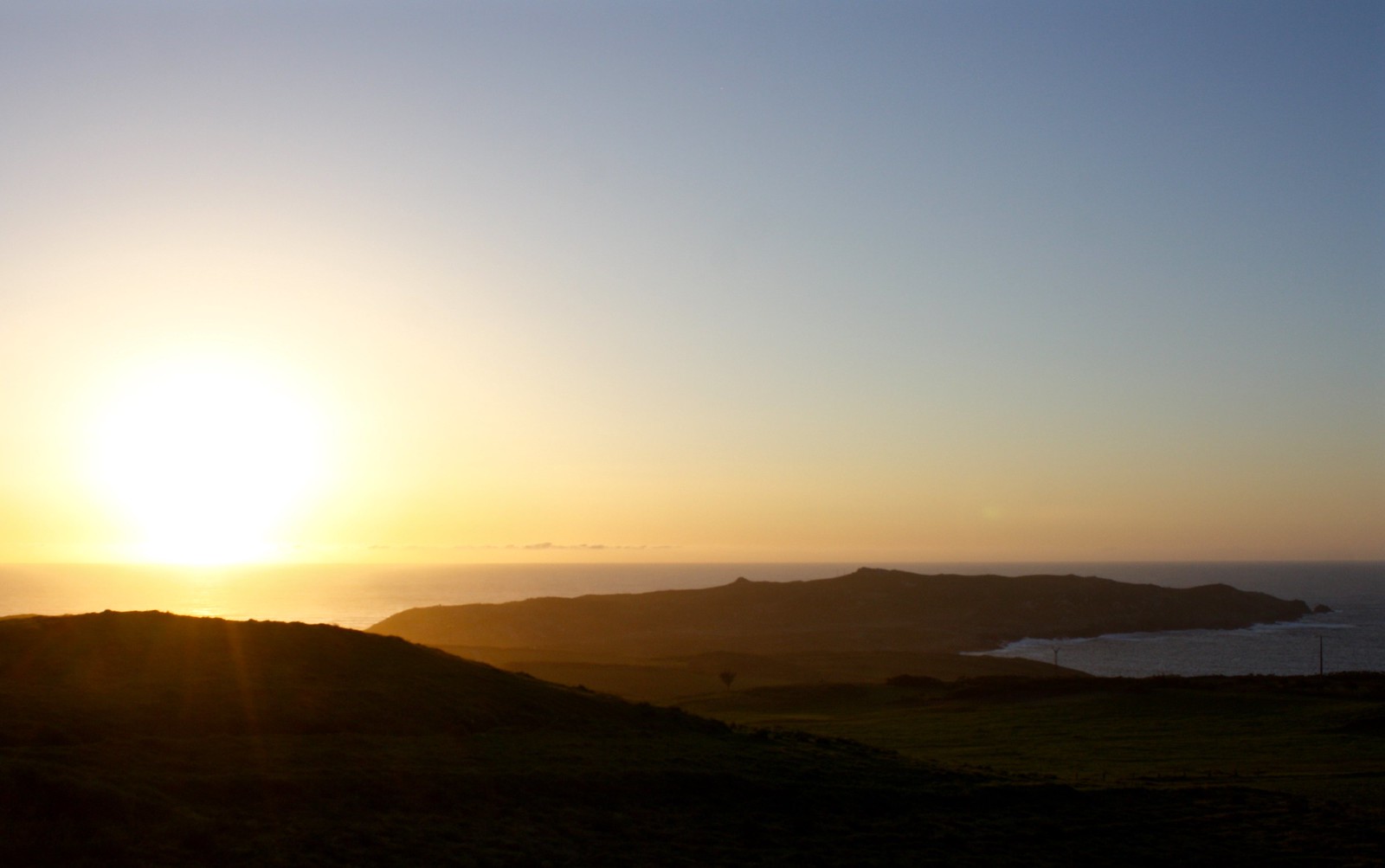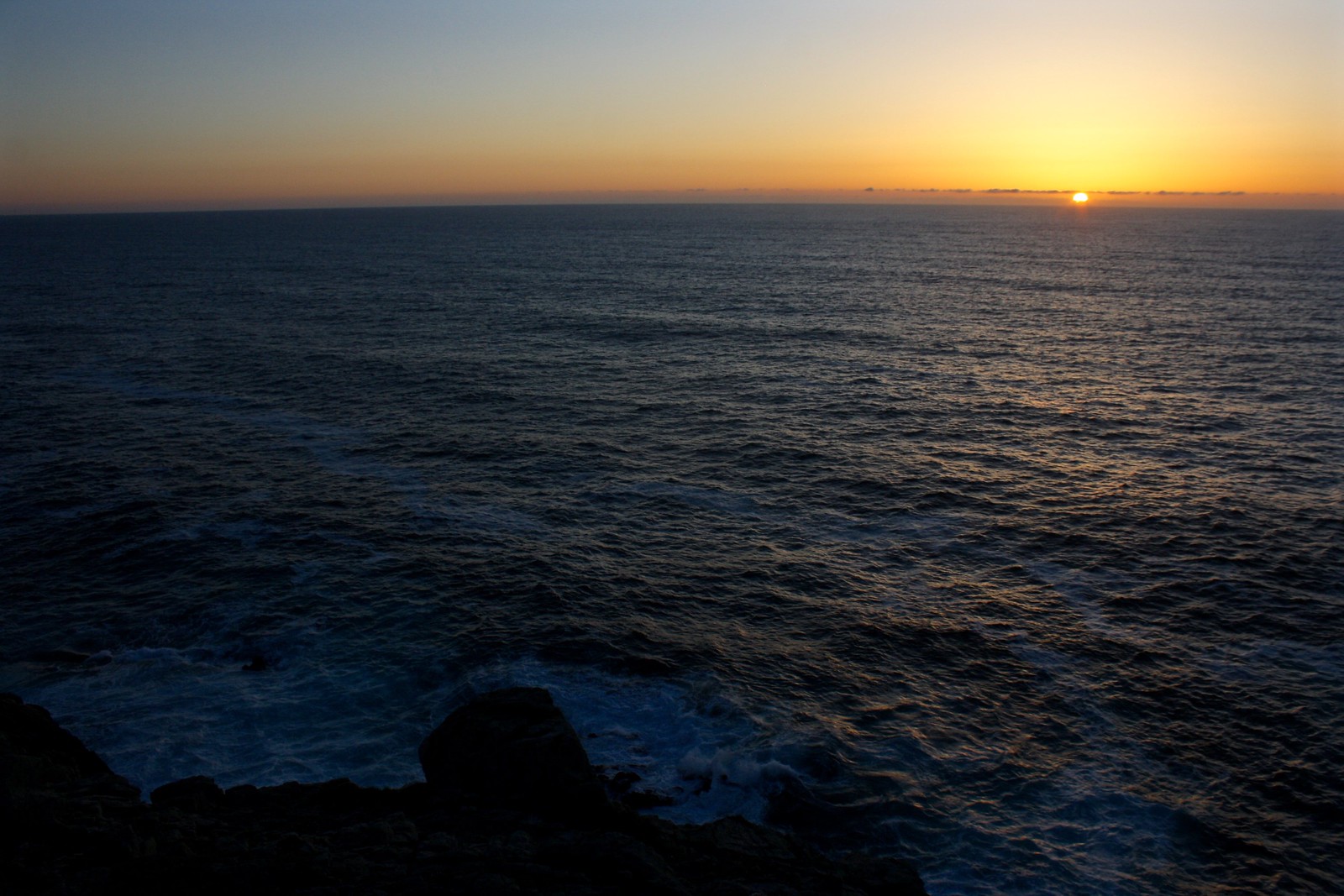If you happen to find yourself in Santiago de Compostela and have run out of
things to do, I’d recommend going on
day trips to check out more of Galicia’s beautiful cities and natural wonders, from the
“Glass City” of A Coruña and
Roman-walled Lugo to the pristine beaches of the
Cíes Islands and the natural hot springs of
Ourense. You can reach some really exciting places on a one-hour train ride, but if you know how to drive stick shift, it’s best to rent a car and head out west to hug the coastline until you reach the Atlantic Ocean.
The historic fishing villages of
Noia and Muros will whet your appetite for Gothic architecture and seafood tapas, whereas coastal
Carnota has kept an entire beach reserved just for you. Just around the corner, the
Ézaro waterfall is the only point in mainland Europe where a river empties into the sea via a waterfall.
The cherry on top (the shrimp on the paella?) is without a doubt
Fisterra, also called Finisterre, from the name the Romans used to describe this area,
finis terrae—“Lands End.”
Fisterra: The true ending point for the Camino de Santiago
The
Camino de Santiago proper ends at the
cathedral of Santiago de Compostela, where the supposed remains of the Apostle St. James are buried. Medieval Christians would go on pilgrimage across northern Spain to reach the Christian world’s third-holiest site. Afterward, many would proceed on to Galicia’s Atlantic coast—which is, after all, only 89km (55 miles) from Santiago. In Roman times, you could find an
ara solis or “altar to the sun” where the lighthouse stands today, so this rocky outcropping has likely had
a spiritual pull on humans since time immemorial.
A handful of pilgrims today continue to make the extension from Santiago to Fisterra, motivated by a desire to collect more stamps in their pilgrim passport…
or perhaps drawn by the inexplicable allure of the sea. Barely a tenth of all pilgrims who reach Santiago keep walking to Fisterra, so this lonely, three-day hike offers an introspective escape from the hordes on the
camino francés. When I
hiked this route three years ago, I enjoyed passing through thick, fragrant eucalyptus groves, over old, eroded ridges, and next to rural family farms and ranches.
The 0,0 km marker is posted at a whitewashed granite lighthouse that towers over the cliffs below. It serves as a beacon for the fleet of fishing boats that moors here every day as well as for the dozens of pilgrims searching for the Way. Plodding wearily in between the throngs who have parachuted here on charter buses from Santiago, they’re overcome with joy, having finally reached their goal. Many have walked here on foot from the Pyrenees Mountains back in France—with the blisters to prove it.
Traditionally pilgrims would burn their stinky clothes and bathe in the ocean, and you can often find some sun-bleached t-shirts tied to crosses or tattered hiking boots with sentimental quotes plastered nearby. Whether they walked 3 or 30 days to get here (or rode on a 3-hour bus tour), everyone ends up hanging out on the cliffs to watch the sun pass beneath the horizon in the evening.
Sunsets and emotional arrivals aside,
the town of Fisterra itself is a bit of a dump. Redeemed only by an endless supply of freshly-caught seafood, Fisterra is a mix of opportunistic hostels and restaurants that prey on worn-out pilgrims…and what Galicians refer to as
feísmo,—an “ugly-ism” that consists of hastily-constructed houses with exposed brick-and-concrete framing, corrugated metal siding, unfinished walls, hideous tiling choices, and creeping black mold.
Muxía: Some pilgrims just can’t stop walking
Although there’s plenty of pilgrims who walk from Santiago to Fisterra and then return on the bus, an even-more-dedicated bunch head north to coastal Muxía before veering east to loop back to Santiago. Pronounced “moo-SHEE-ah” [muˈʃi.a], this compact village is home to the
Church of Nosa Señora da Barca, dedicated to “Our Lady of the Boat”: a bodily apparition of the Virgin Mary who came on a stone boat to encourage the Apostle St. James when he was evangelizing in Roman Hispania (according to legend, of course).
Although not nearly as huge as the basilica that venerates Nuestra Señora del Pilar in Zaragoza—where the Virgin Mary was
also reported to have bodily appeared to St. James to encourage him while evangelizing—this church adds another layer to the Jacobean tradition.
The Virgin Mary’s stone boat is said to have remained in Muxía; the sails endure as the
pedra dos cadrís, a jaunty, kidney-shaped stone with a small cavity beneath it that locals crawl through nine times each to be cured of kidney problems or rheumatism.
Just a (smaller) stone’s throw from the church looms a
monument to the Prestige oil spill that devastated the Galician coastline in 2002. The hulking slab of granite hewn almost in two memorializes not only the environmental damage the region endured a decade ago but also the major economic impact of local fishers losing half the year due to the spill.
Cabo de Touriñán: The ideal spring and autumn sunset-watching spot
While the Romans considered Fisterra the “end of the world,”
the westernmost point in mainland Spain actually happens to be Touriñán Cape. This slender peninsula emerges from dense, ancient forests punctuated only by stark clearings for tiny potato patches or cattle pastures. As you drive through these hills on back country roads, you wonder how people can survive out here, in the most rural part of rural Galicia, so far from any major city?
But it’s not hard to see the attraction of roughing it way out in far western Spain: for two months out of the year, Touriñán Cape is the place where
you can see the final rays of light anywhere in Europe before the sun sets beneath the Atlantic. Yes, for one month after the spring equinox in March and during the month or so leading up to the autumnal equinox in September, you can take in the “longest” sunset in Europe and literally have a sunset all to yourself since nobody else is as far west as you are. Plan your visit accordingly like I did and make sure to show up in April!
If you’ve hiked the Camino de Santiago before, did you continue on to Fisterra on foot or did you hitch a ride on the bus? Comment below!
